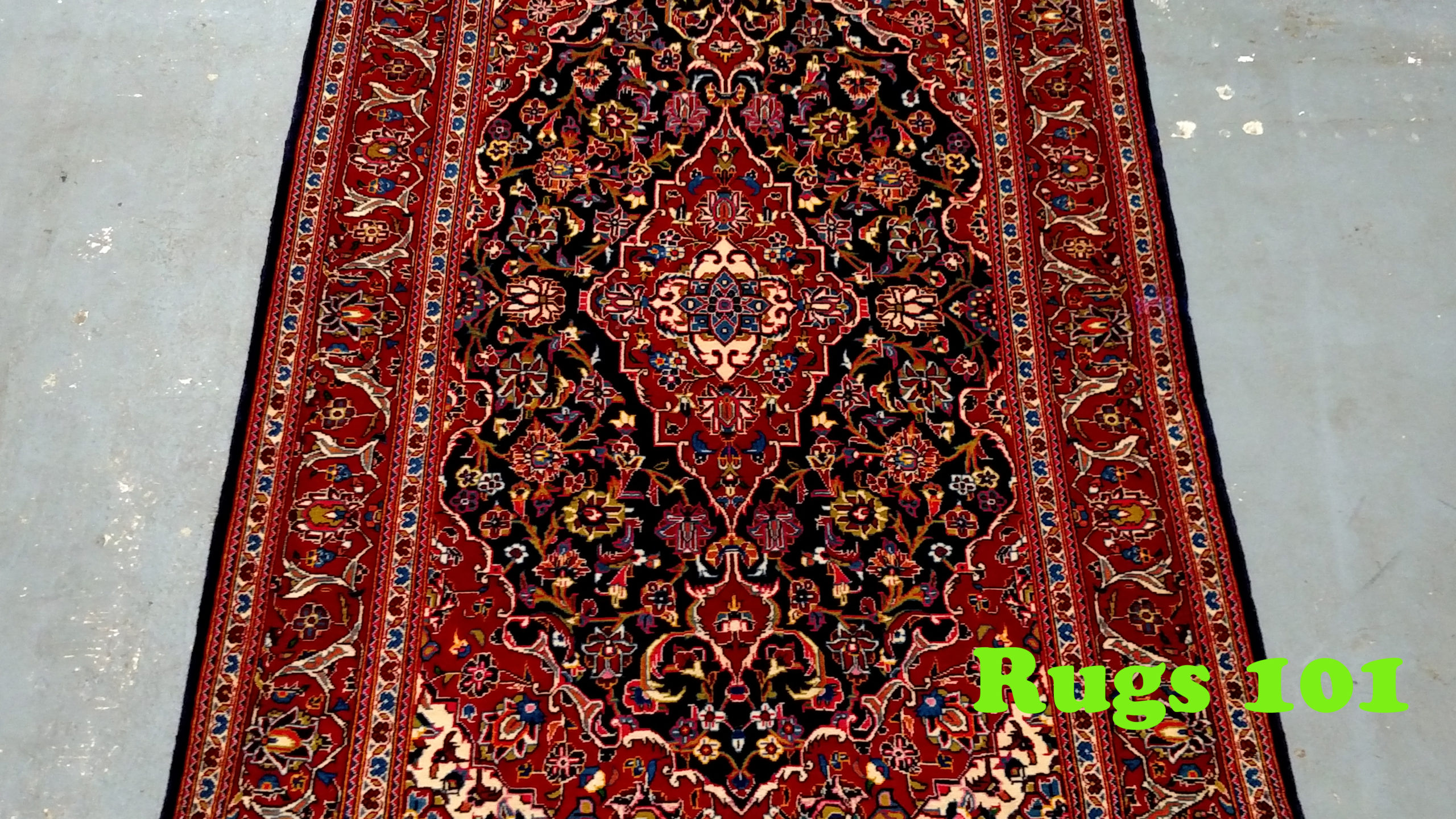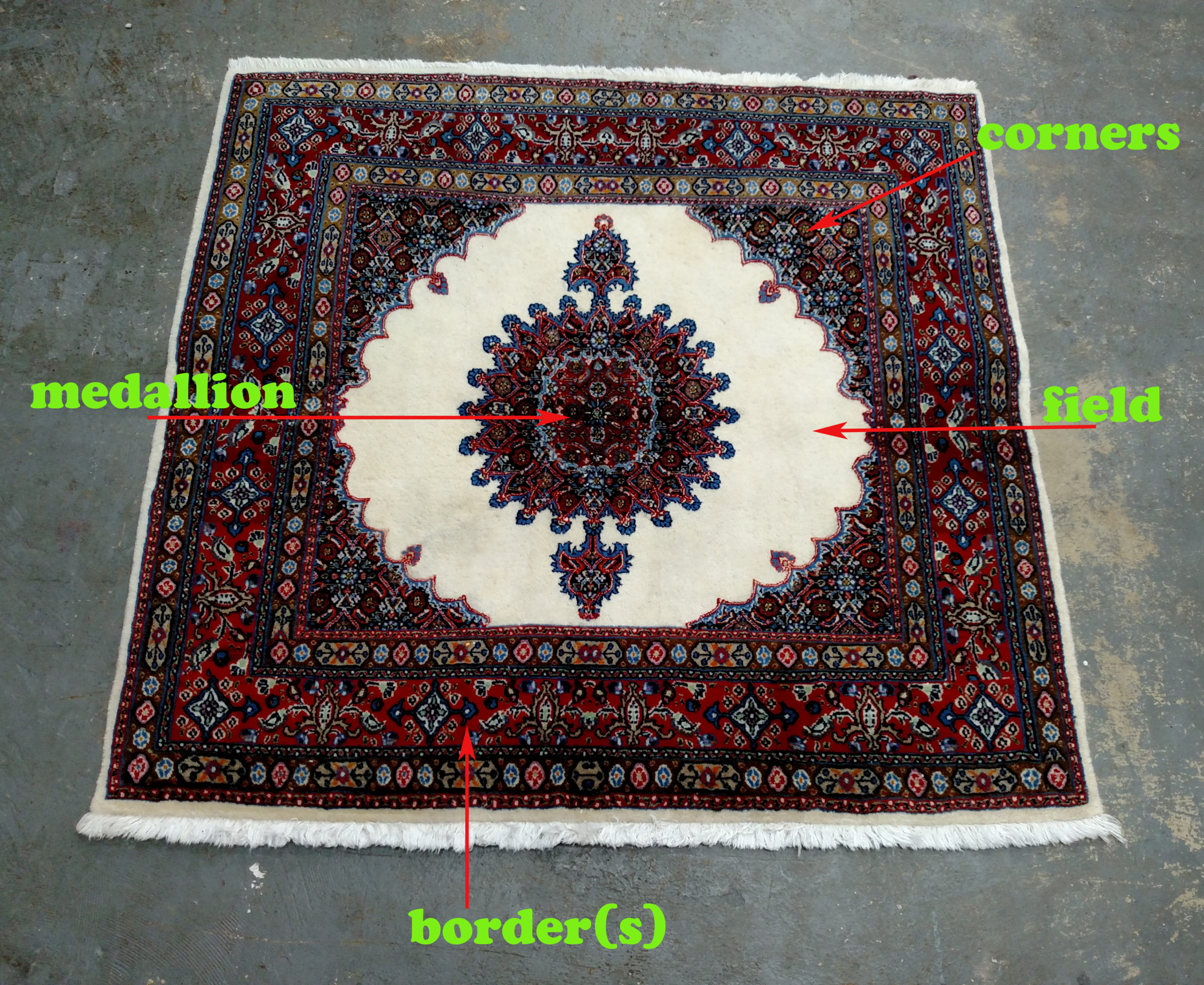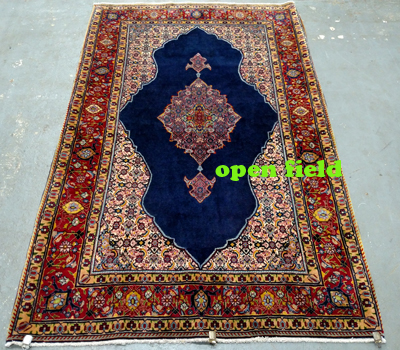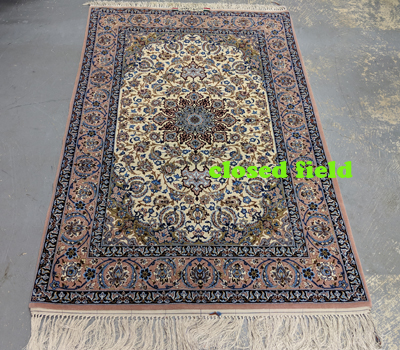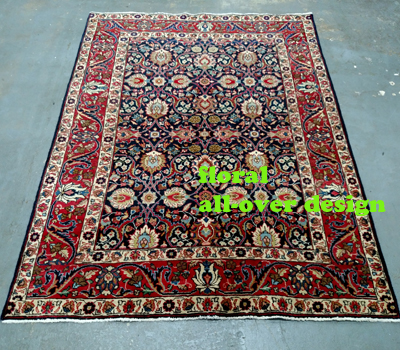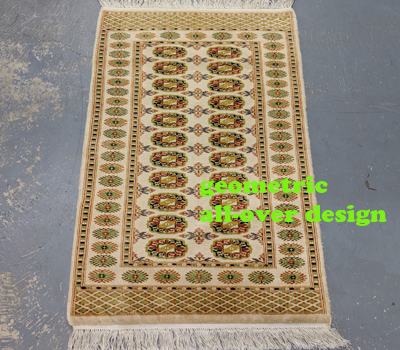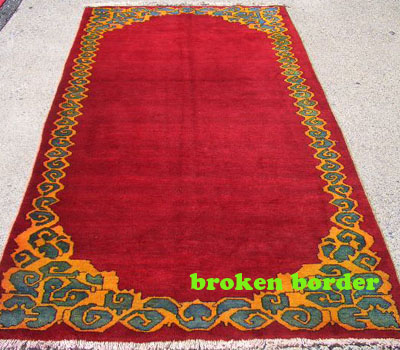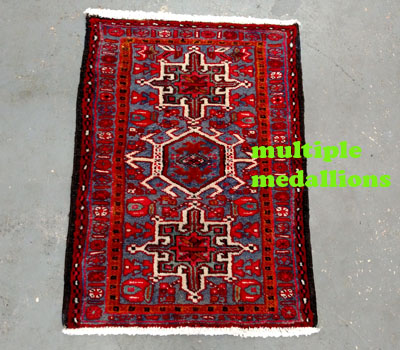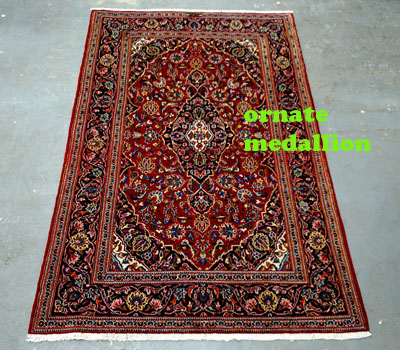Hello, Friends! Enjoy this post I created about the various parts of a rug! It has been quite some time since I posted on this blog of ours, and now that we have a brand new website, it only seemed fitting to take up writing again. As we rebuilt our website, I had to spend quite a bit of time explaining all that we do to those that didn’t know, and it was very refreshing to see my business through the eyes of a marketer who is neither in my family nor in the rug business. It made me realize that I take for granted the knowledge that I have and probably need to stop, rewind and start at the very beginning (cue Do-Re-Mi from the Sound of Music) for our customers and, yes, also my husband.
Types of Rugs
So, before I take any deep dives into the Silk Road and its products, I’m going to start with a very basic rug vocabulary lesson that should help with any and all posts on our site moving forward. Area rugs are rugs that cover some, but not all of the floor. Carpet is a rug that tends to cover all the floor or go wall-to-wall. In our industry, we tend to use the terms “rug” and “carpet” interchangeably when referring to area rugs. When referring to wall-to-wall carpeting, the term rug is never used.
In terms of area rugs, our expertise is Oriental rugs and Persian rugs. Both of these terms are also used interchangeably to describe almost any rug that looks like it could be made in Asia or the Middle East (including machine-made ones). Technically, “Persian” should only be used to describe handmade rugs from Persia, or modern day Iran, but I’m probably the only stickler about that. Because of this, when shopping for rugs you should 1) only shop from me (duh) and/or 2) make sure that you pay no attention to descriptive words like “Oriental” or “Persian” and only pay attention to the country of origin of a rug and the way in which the rug was constructed. (We’ll get into rug construction at a later date.)
Parts of a Rug
Now that I’ve thoroughly confused you about the different ways in which to refer to a rug, let me break things down (and make you a little more confused). In this post, I’m going to just go over all of the decorative parts of a rug. We’ll get to the structural parts in the next post. I’m going to keep it simple, and use the terminology that we in the rug biz use. If you want to get super fancy, and learn all about scholarly terminology, you should consider going to an event at the Textile Museum. Here is a graphic of a rug with the parts pointed out:
The picture really explains itself, but I’ll explain more because I talk too much. The central portion of the rug is called a field. The field may or may not contain a prominent ornamental figure called a medallion. The corners of the central field of the rug can have a few different names, but almost everyone can agree on the term corner. Not all rugs have corners, but generally those with medallions do. Finally, the outermost portion of the rug is its borders. Generally, there are several borders, and you may hear terms floating around such as main, wide, narrow, outermost or guard borders.
Different Types of Fields
The main field of a rug can have pretty much anything in it, but generally, there are three different types of fields. An open field is a rug that has a central medallion surrounded by a solid colored rug. If you spill coffee a lot, a light, open field rug is a terrible idea. A closed field rug also has a prominent central medallion, but there is some sort of design to cover the remaining field of the rug. A rug with what is called an all-over design is one which does not have a medallion. All-over designed rugs are a perfect pick when you have a room with an off-center focal point or furniture placement. They come in all different styles and qualities. I’ve posted examples of floral and geometric all-over designed pieces. See below for examples of these types of fields.
Different types of Borders
As I mentioned above, there are lots of different names for the various borders around the outside of a rug. In the rug biz, we really only distinguish between two of them. The first is a regular border, which we just call a border. The second is a broken border. Regular borders consist of one or many nested, straight-edged rectangles or squares. Broken borders are those with little or no straight edges. I can honestly say that I rarely use these terms. But, before the internet and the easy exchange of photos, I can see how dealers would use these terms frequently when describing their wares. See my examples of borders below:
Examples of Medallions
Medallions can be seen in all different types of rugs from the most rudimentary tribal pieces to the most opulent floral carpets. Some rugs may even have several medallions running down the center of a rug. You probably can spot a medallion pretty easily, so I’ll just post a couple pics below of different medallion types for your enjoyment.
So there you go, my friends. The first crash course in Rugs 101 is now complete, and you can expect a quiz shortly. I’ll try and post these every once in a while so that you know what I know, and then maybe I can hire you and retire.

